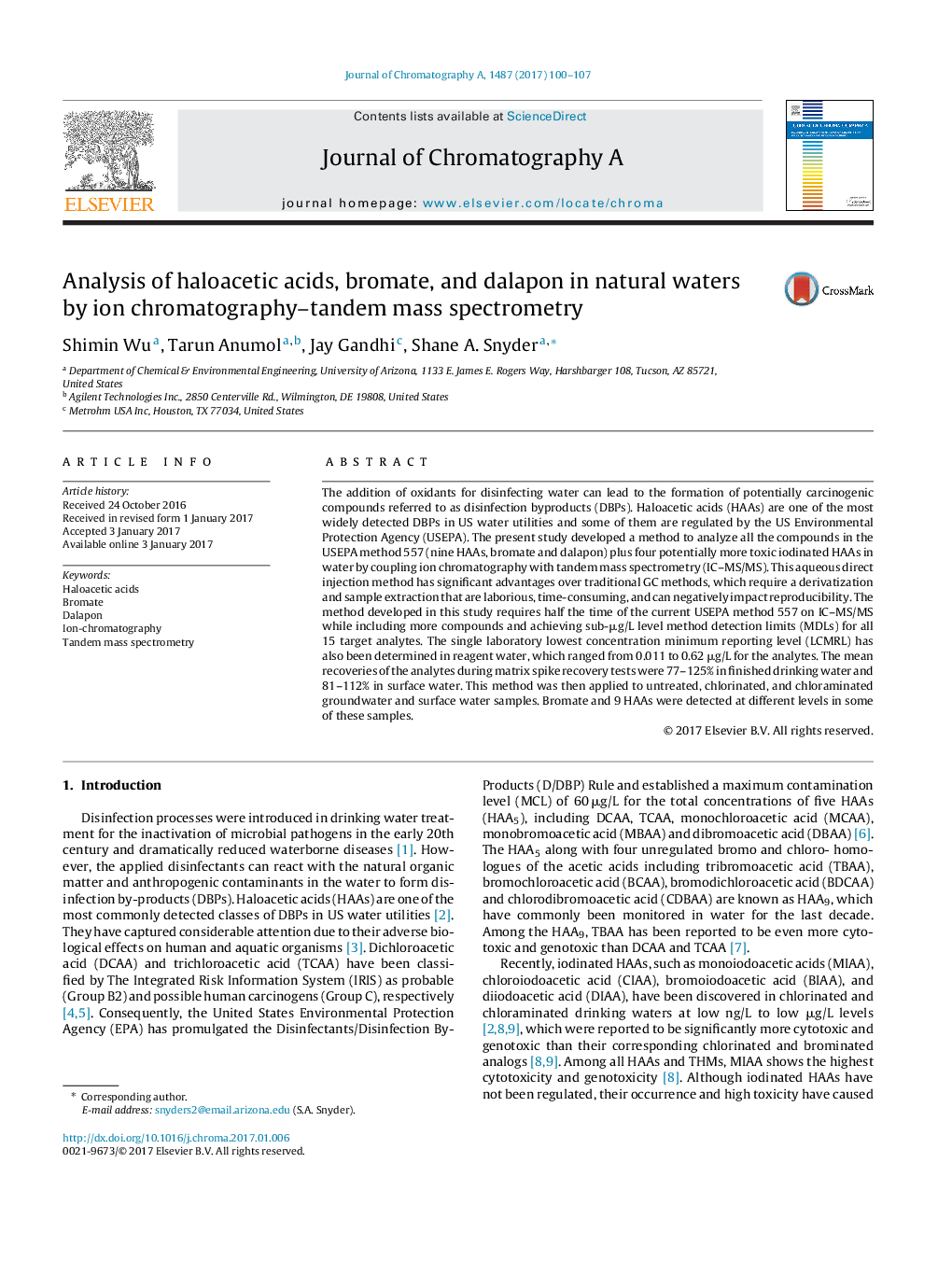| کد مقاله | کد نشریه | سال انتشار | مقاله انگلیسی | نسخه تمام متن |
|---|---|---|---|---|
| 5135717 | 1493439 | 2017 | 8 صفحه PDF | دانلود رایگان |

- Direct water injection with ion chromatographic separation and tandem mass spectrometric detection provided for sub-ug/L quantification of nine haloacetic acids, bromate, and dalapon.
- Analysis time using the proposed method is less than 50% of that required by conventional methods.
- Spiking experiments demonstrated 78-125% recovery of target compounds in raw and treated drinking waters.
The addition of oxidants for disinfecting water can lead to the formation of potentially carcinogenic compounds referred to as disinfection byproducts (DBPs). Haloacetic acids (HAAs) are one of the most widely detected DBPs in US water utilities and some of them are regulated by the US Environmental Protection Agency (USEPA). The present study developed a method to analyze all the compounds in the USEPA method 557 (nine HAAs, bromate and dalapon) plus four potentially more toxic iodinated HAAs in water by coupling ion chromatography with tandem mass spectrometry (IC-MS/MS). This aqueous direct injection method has significant advantages over traditional GC methods, which require a derivatization and sample extraction that are laborious, time-consuming, and can negatively impact reproducibility. The method developed in this study requires half the time of the current USEPA method 557 on IC-MS/MS while including more compounds and achieving sub-μg/L level method detection limits (MDLs) for all 15 target analytes. The single laboratory lowest concentration minimum reporting level (LCMRL) has also been determined in reagent water, which ranged from 0.011 to 0.62 μg/L for the analytes. The mean recoveries of the analytes during matrix spike recovery tests were 77-125% in finished drinking water and 81-112% in surface water. This method was then applied to untreated, chlorinated, and chloraminated groundwater and surface water samples. Bromate and 9 HAAs were detected at different levels in some of these samples.
Journal: Journal of Chromatography A - Volume 1487, 3 March 2017, Pages 100-107